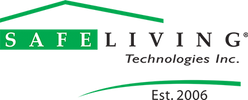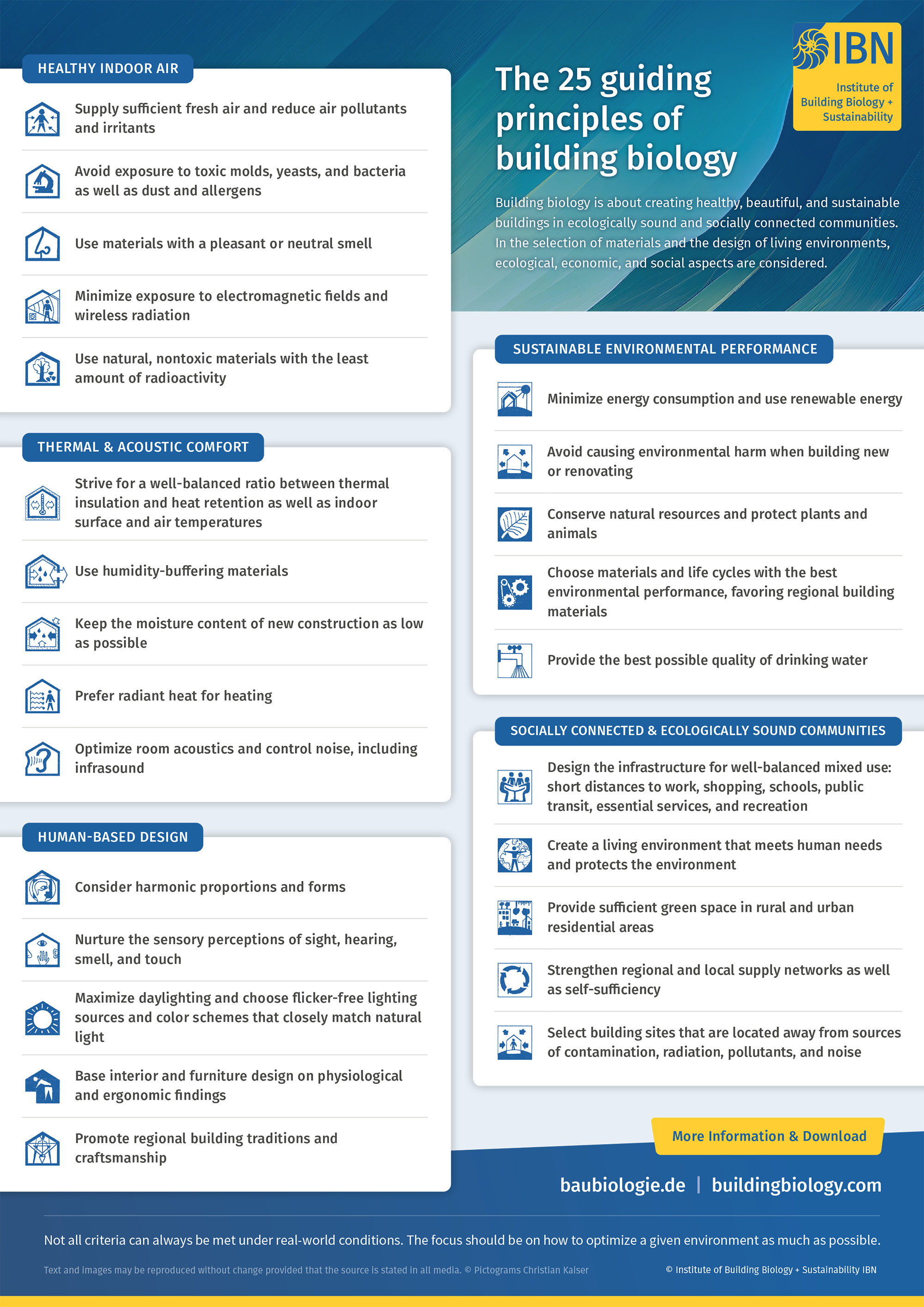Building Biology
What Is Building Biology?
Building biology studies the holistic relationship between humans and their indoor environment. It is based on 25 principals looking at 19 different categories in the areas of electrosmog (Electromagnetic fields or EMFs), light, sound, radiation, indoor toxins, indoor pollutants, indoor climate, mold, bacteria, and allergens. The Building Biology standard and guidelines, now in their 8th revision, is the result of over 30 years of research, over 10,0000 actual surveys of sleeping areas in collaboration with over 100 medical physicians along with many scientists, researchers, engineers, and practicing building biologists.
-
 The foundations of the building biology standard and guides has always been:
The foundations of the building biology standard and guides has always been:- Any risk reduction is work aiming for.
- Numbers in the guide are only meant to be a guide, no more, no less.
- Whenever possible use nature as the ultimate standard.
The Building Biology Standard and Guidelines are now being used as a basis and guideline by colleagues and institutes throughout Germany, Europe, North and South America, Australia, New Zealand, India, and Japan to name a few. As of 2016, there has been over 7000 students completing courses in building biology world wide.
To learn more about Building Biology click here or please contact Rob Metzinger - President, Safe Living Technologies Inc., EET, EMRS, BBEC.

About Building Biology
-
 How Did It Start? How Did The Standard Of Building Biology Testing Methods Evolve?More than 30 years ago, we from Baubiologie Maes began analyzing and structuring the many aspects pertaining to the Building Biology Testing Methods. Over the next years, based on our testing experience, we developed the first Standard by request of the Institut für Baubiologie IBN. Soon the Building Biology Evaluation Guidelines for Sleeping Areas followed. Both the Standard and the Evaluation Guidelines were first published in 1992. The most current version is called SBM-2015, which is the 8th edition and was presented at the IBN Conference at Rosenheim/Germany in May 2015. Since 1999, the Building Biology Standard, the Evaluation Guidelines and the accompanying Testing Conditions, Instructions and Additions have been codeveloped by a committee of experienced building biology professionals with additional help from other colleagues. Scientists from physics, chemistry, biology and architecture as well as medical doctors, laboratories and other experts have also made complementary contributions.
How Did It Start? How Did The Standard Of Building Biology Testing Methods Evolve?More than 30 years ago, we from Baubiologie Maes began analyzing and structuring the many aspects pertaining to the Building Biology Testing Methods. Over the next years, based on our testing experience, we developed the first Standard by request of the Institut für Baubiologie IBN. Soon the Building Biology Evaluation Guidelines for Sleeping Areas followed. Both the Standard and the Evaluation Guidelines were first published in 1992. The most current version is called SBM-2015, which is the 8th edition and was presented at the IBN Conference at Rosenheim/Germany in May 2015. Since 1999, the Building Biology Standard, the Evaluation Guidelines and the accompanying Testing Conditions, Instructions and Additions have been codeveloped by a committee of experienced building biology professionals with additional help from other colleagues. Scientists from physics, chemistry, biology and architecture as well as medical doctors, laboratories and other experts have also made complementary contributions. -
 Who Is Using The Standard Today?
Who Is Using The Standard Today? -
 What Makes The Standard So Unique?
What Makes The Standard So Unique?
Copyright © Building Biology - BAUBIOLOGIE MAES
25 Building Biology Principles
Copyright © Building Biology - BAUBIOLOGIE MAES


